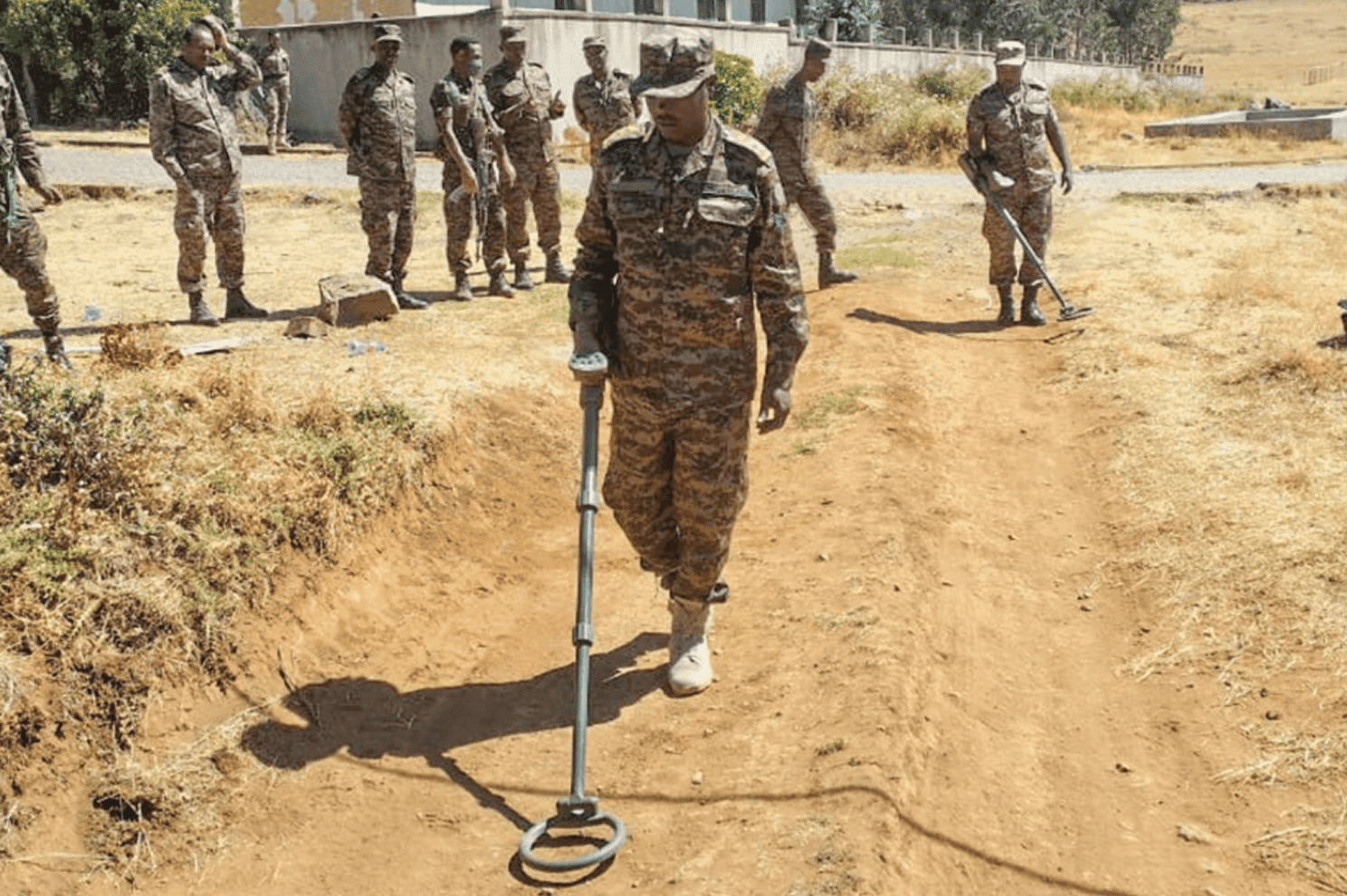Countermine detection is a critical part of ensuring safety in conflict and post-conflict zones. Whether you’re involved in humanitarian demining, military operations, or industrial site clearance, understanding the range of detection technologies available helps you choose the best tools for the job. In this article, we explore the main countermine detection technologies, their advantages, limitations, and how Garrett’s advanced solutions support effective mine detection.
Understanding Countermine Detection
Countermine detection involves locating and identifying buried landmines and unexploded ordnance (UXO) safely and efficiently. Technologies have evolved to address challenges posed by different terrains, soil types, and mine compositions—from metal-heavy artillery mines to plastic-cased improvised explosive devices.
Metal Detectors: The Foundation of Countermine Detection
Metal detectors remain the backbone of countermine operations. Two main types are pulse induction (PI) and very low frequency (VLF) metal detectors.
- Pulse Induction (PI): Great for highly mineralized soils like deserts or beaches, PI metal detectors send pulses into the ground and detect changes in the return signal caused by metal objects. They are less affected by soil minerals and moisture, making them reliable in tough environments.
- Very Low Frequency (VLF): These detectors produce a continuous low-frequency magnetic field and excel at discriminating different types of metal. VLF detectors are often more sensitive to small metal fragments but can be challenged by mineralized soils.
Both PI and VLF have roles depending on terrain and operational needs. Garrett’s Recon Pro AML series offers advanced Pulse Induction technology (PI), designed for high-sensitivity and discrimination in diverse environments.
Ground Penetrating Radar (GPR): Seeing Beyond Metal
GPR uses radio waves to create an image of subsurface features. Unlike metal detectors, GPR can detect non-metallic mines such as plastic or ceramic mines that often go undetected otherwise.
- Advantages: GPR can identify shape and depth of objects, improve detection of modern low-metal signature mines, and provide more detailed target imagery.
- Limitations: Effectiveness declines in highly conductive or wet soils, and equipment tends to be more complex and costly.
Garrett’s Recon Pro AML models works with Pulse Induction technology to enhance detection of both metallic and non-metallic threats. Our detectors work exceptionally well alongside GPR systems.
Pulse Induction Metal Detection: Cost-Effective and Reliable
Hybrid systems that combine metal detection with ground penetrating radar (GPR) can improve accuracy, but they are costly and complex. Garrett’s advanced pulse induction (PI) technology delivers dependable detection performance at a fraction of the cost, making it a smarter choice for most field operations.
Our PI systems reduce false alarms, perform in mineralized or difficult soils, and remain lightweight and portable. When paired with GPR as needed, they provide an optimal balance of affordability and capability. The Recon Pro AML-1000 showcases this advantage, engineered for rugged missions with proven PI detection, while adaptable to work alongside GPR when required.
Portability and Operational Considerations
Countermine technologies vary in size and portability:
- Handheld detectors offer mobility and ease of use for tight or challenging terrain.
- Vehicle-mounted or cart systems cover large areas but require more logistical support and may not always be able to access key areas.
- Training needs differ, designs from Garrett focus on operator-friendly interfaces to shorten the learning curve.
Cost and Maintenance: Planning for Long-Term Use
While high-tech GPR systems can be expensive upfront, their enhanced detection capabilities justify the investment in many scenarios. Metal detectors tend to have lower maintenance costs and longer service lives. Proper accessories and regular servicing extend equipment durability.
Explore Garrett’s range of countermine detectors and accessories for solutions tailored to diverse operational budgets.
Real-World Applications and Case Studies
Countermine technologies have saved lives and restored safety worldwide. Field reports show successful clearance of minefields using Pulse Induction Garrett detectors, underscoring the importance of combining technology and skilled operators.
Beyond traditional military applications, Garrett systems have become trusted tools in humanitarian and counter-narcotic demining programs, where the Recon Pro line’s affordability and rugged durability make them a practical choice for organizations working with limited budgets. This balance of reliability and cost-effectiveness ensures more communities can benefit from safe and sustainable clearance operations.
Frequently Asked Questions
Q: How does soil type affect countermine detection?
A: Mineralized and wet soils impact metal detectors differently. Pulse Induction models are designed to handle challenging soil conditions better than VLF or GPR detectors.
Q: Can countermine detectors differentiate between mines and scrap metal?
A: Advanced systems use signal discrimination to help reduce false positives, but operator skill remains crucial.
Q: Are Garrett’s countermine detectors portable for field use?
A: Yes, our PI metal detectors are all lightweight and portable – perfect for field use.
Why Choose Garrett?
Choosing the right countermine detection technology depends on your operational environment, threat level, and resources. Utilizing advanced Pulse Induction technology, we provide the highest level of reliability and efficiency. Garrett’s innovative equipment empowers users with versatile, reliable tools to meet the demanding challenges of countermine detection.
Learn more about Garrett’s countermine detectors and solutions and how they can support your mission.


